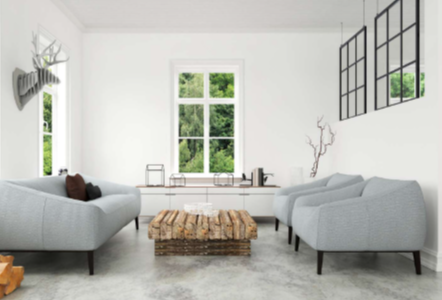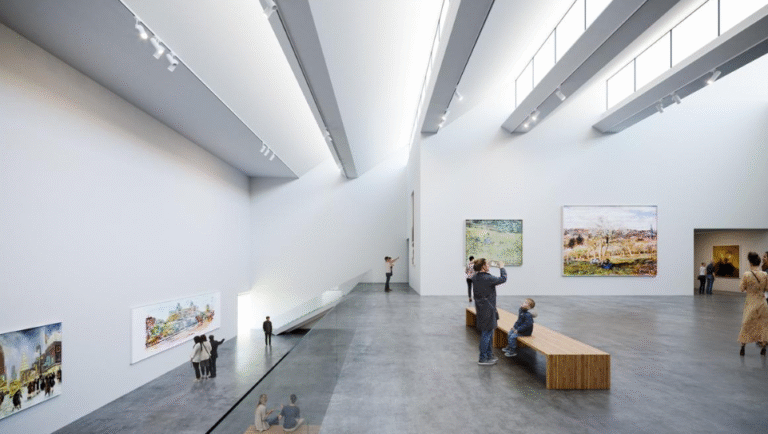Residential Polished Concrete Floors: A Modern Blend of Style, Durability, and Sustainability
Introduction to Residential Polished Concrete Floors
In today’s world of contemporary design, homeowners are increasingly seeking flooring options that combine minimalism with high performance. Among the many available materials, residential polished concrete floors have quickly emerged as a top contender. Offering a seamless blend of durability, aesthetics, low maintenance, and eco-friendliness, polished concrete is no longer limited to commercial and industrial settings. It is now a leading choice for modern homes, from open-plan living spaces to kitchens, basements, and even bedrooms.
This comprehensive guide explores everything you need to know about polished concrete flooring for residential use—what it is, how it’s made, the benefits, design options, installation process, and how to care for it long-term. Whether you’re building a new home or renovating an old one, this flooring solution may be exactly what you’re looking for.
To learn more or get professional assistance, explore the experts in residential polished concrete floors who can help bring your vision to life.
What Are Residential Polished Concrete Floors?
Residential polished concrete floors are created by grinding down the surface of a concrete slab using progressively finer abrasives, resulting in a smooth, glossy finish. The polishing process not only enhances the appearance of the concrete but also improves its strength, durability, and longevity.
The process can involve multiple stages depending on the desired level of sheen, from a matte satin finish to a high-gloss mirror-like appearance. Homeowners can also choose different levels of aggregate exposure—from minimal exposure for a sleek look to full exposure for a terrazzo-like finish.
Unlike traditional flooring options that are applied over subfloors, polished concrete works with the concrete slab itself, making it an efficient and cost-effective option in homes with existing or new concrete bases.
Why Choose Polished Concrete for Residential Spaces?
1. Sleek, Modern Aesthetics
Polished concrete is the hallmark of modern minimalist design. Its clean lines and high-gloss appearance lend themselves well to open-plan homes, lofts, and contemporary architecture. It provides a neutral, sophisticated backdrop that enhances any décor—whether you prefer industrial chic or Scandinavian simplicity.
2. Exceptional Durability
One of the main reasons homeowners choose residential polished concrete floors is their incredible resilience. Concrete is inherently tough, and when polished and sealed, it becomes even more resistant to wear and tear. It stands up to foot traffic, pets, dropped items, and everyday use far better than most flooring materials.
3. Low Maintenance
Polished concrete floors require minimal maintenance. There’s no need for waxing, stripping, or extensive upkeep. Regular dust mopping and occasional wet cleaning with a pH-neutral cleaner are generally all that’s needed to maintain their shine and cleanliness.
4. Environmentally Friendly
Polished concrete is considered a sustainable flooring choice. It utilizes existing materials—usually the home’s foundation slab—meaning there’s no need to add or import additional flooring layers. Plus, its long lifespan reduces waste, and its reflective surface can improve indoor lighting, reducing the need for artificial lighting.
5. Allergen-Free and Healthy Living
Concrete doesn’t trap dust, pollen, pet dander, or mold, making it ideal for households with allergy sufferers. The sealed surface is easy to clean and discourages the buildup of allergens and bacteria.
6. Versatile Design Possibilities
With a wide range of coloring, staining, scoring, and finishing options available, residential polished concrete floors can be tailored to suit virtually any style. You can mimic the look of marble, granite, or tile—or opt for a raw, industrial vibe.
Types of Polished Concrete Finishes
1. Cream Finish
This is the smoothest and most natural-looking finish, created by polishing the top layer of the concrete without exposing any aggregate. It’s ideal for homes with modern and minimalist interiors.
2. Salt and Pepper Finish
In this finish, a light grind reveals small particles of sand and fine aggregate beneath the surface. It offers a slightly textured, organic look that suits both rustic and contemporary designs.
3. Full Aggregate Exposure
This involves grinding the concrete down to expose the larger stones within the mix. The result is a visually stunning terrazzo-like effect that adds texture and interest to larger spaces.
4. High-Gloss vs. Matte
You can choose the level of gloss that fits your space. A high-gloss finish reflects more light and gives a luxurious feel, while a matte or satin finish feels more subdued and natural.
Installation Process of Residential Polished Concrete Floors
Installing polished concrete in a residential setting is a precise and technical process that requires professional equipment and skilled contractors. Here’s an overview of the typical process:
Step 1: Inspection and Preparation
The concrete slab is assessed for cracks, moisture content, and overall condition. Any repairs, patching, or levelling are completed before polishing begins.
Step 2: Grinding
Using heavy-duty grinders with diamond-embedded pads, the surface is ground down to the desired level. This can be done lightly (for cream or salt-and-pepper finishes) or more aggressively (for full aggregate exposure).
Step 3: Hardening
A chemical hardener or densifier is applied to the surface. This penetrates the concrete and reacts with it to increase hardness and durability, reducing dusting and surface wear.
Step 4: Polishing
The surface is polished using increasingly finer abrasives—often going through six to eight stages—until the desired level of smoothness and sheen is achieved.
Step 5: Sealing
A penetrating sealer is applied to protect the surface from stains, moisture, and wear. It also enhances the depth of color and the natural patterns in the concrete.
See Also: How Tech Is Helping Solve the Global Water Crisis
Design Options and Enhancements
- Color Staining
Concrete can be acid stained or dyed to achieve a wide range of colors, from earthy browns and deep greys to vibrant tones and custom hues. Stains penetrate the surface, offering long-lasting, UV-resistant coloration.
- Engraving and Saw Cutting
For homeowners wanting to add unique patterns, borders, or faux tile effects, decorative saw cutting or engraving can create distinct geometric or organic designs.
- Inlays and Borders
Integrate elements like glass chips, metal strips, or stone to personalize your floors. Contrasting borders or colored bands can also help define spaces within open-plan layouts.
- Radiant Heating Compatibility
Polished concrete works exceptionally well with underfloor radiant heating systems. The material holds and radiates heat efficiently, improving comfort and reducing energy bills.
Where to Use Polished Concrete in the Home
- Living Rooms
A polished floor can create a high-end, gallery-like feel in living areas, reflecting light and making the space feel larger and brighter.
- Kitchens
Durable and easy to clean, polished concrete is ideal for kitchens. It resists spills, stains, and foot traffic while offering a sleek aesthetic.
- Bedrooms
Concrete may seem unconventional for bedrooms, but it provides a calm, neutral base that works well with rugs and layered décor. The cool touch can also be refreshing in warmer climates.
- Bathrooms
When properly sealed, polished concrete resists moisture and staining, making it a great fit for modern, spa-inspired bathroom designs.
- Basements
Polished concrete is a moisture-resistant option for below-grade rooms, preventing mold growth and reducing allergens.
- Hallways and Entryways
These high-traffic zones benefit from concrete’s durability. Polished floors also leave a great first impression with their clean, professional look.
Maintenance Tips for Long-Lasting Beauty
Even though polished concrete is known for its low maintenance, a few simple care steps can ensure your floors continue to look their best for years:
Regular Cleaning
- Sweep or vacuum regularly to remove dirt and grit that can dull the surface.
- Mop occasionally using a pH-neutral cleaner and water.
- Avoid harsh chemicals or acidic cleaners that could degrade the sealant.
Protecting the Surface
- Use floor mats at entrances to trap dirt and moisture.
- Add furniture pads under legs to prevent scratching or scuffing.
- Refrain from dragging heavy items across the floor.
Resealing
While polished concrete doesn’t need frequent resealing, applying a fresh coat of sealer every few years (depending on use) can rejuvenate the finish and provide added protection.
Challenges and Considerations
- Cold Surface
Concrete tends to feel cooler underfoot compared to wood or carpet. However, this can be offset with area rugs or underfloor heating.
- Hardness
Its durability also means concrete is a hard surface, which may not be ideal for people who prefer a softer underfoot experience.
- Existing Slab Condition
If your existing concrete slab is uneven, damaged, or heavily cracked, it may require significant preparation before polishing, which can increase costs.
Cost of Residential Polished Concrete Floors
Costs can vary depending on the complexity of the finish, level of grinding, color enhancements, and any design extras. While polished concrete may have a higher upfront cost than basic tiles or vinyl, its long lifespan and low maintenance often make it more cost-effective over time.
Final Thoughts: Is Residential Polished Concrete Right for You?
Residential polished concrete floors offer a compelling combination of aesthetics, performance, and sustainability. They are durable enough to stand up to daily life, beautiful enough to elevate your home’s design, and easy enough to maintain without stress.
Whether you’re building a modern dream home, remodeling a single room, or simply looking for a flooring option that will last decades, polished concrete deserves a place on your shortlist.
If you’re ready to explore the possibilities or want expert advice on your project, connect with the specialists in residential polished concrete floors to transform your concrete slab into a stunning design feature.






